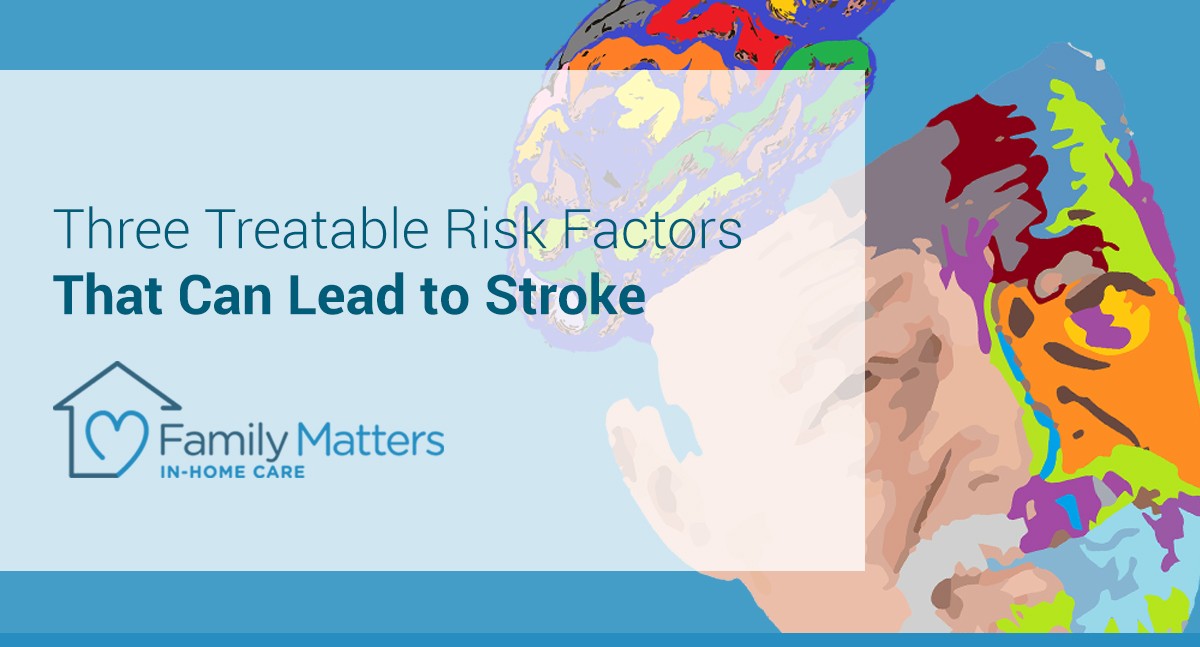
Three Treatable Risk Factors That Can Lead to Stroke
Stroke is a silent killer. It strikes without warning and kills someone every four minutes in the United States. The statistics on stroke are sobering:
- Nearly 800,000 people in the United States have a stroke every year.
- Someone in the United States has a stroke every 40 seconds.
- Stroke is the fifth leading cause of death in the United States, killing nearly 130,000 people a year. That’s one in every 20 deaths.
The good news is that some of the leading risk factors for stroke can be controlled, reducing the chances that you will suffer one. Here are the three leading risk factors and ways in which you can control and manage them.
1. High blood pressure
High blood pressure is considered the leading risk factor for stroke. Even though the number of stroke deaths is still high, a recent decline in the number of strokes is attributed to people controlling their blood pressure. According to the American Stroke Association, controlling blood pressure is “the most significant controllable risk factor for stroke.”
- Schedule an appointment with your physician to have your blood pressure checked. If it is high, there are several things you can do to bring it down to a healthy range. Your doctor may prescribe medication to reduce your blood pressure while you adopt healthy habits to help manage it.
- Maintain a healthy weight. Your doctor can tell you what your goal weight should be. Losing weight will help to control you blood pressure and may even help to bring it down to a healthy level.
- Eat healthy foods. Avoiding high-fat, high-salt diets will help to control your blood pressure. Eat fresh fruits and vegetables in a wide range of colors. The fresher the foods, the more nutrients they have that can help to control your blood pressure.
2. Stop smoking!
Smoking has been linked to narrowed arteries, especially the carotid artery. This is one of the most important arteries in the body because it is the main artery in the neck that supplies blood to the brain. Blockages in this artery are the leading cause of stroke in America. If you quit smoking, you avoid the narrowing of this important artery. When you quit smoking you also help to control your blood pressure. Ask your physician for help to quit smoking. Not only will you reduce your risk of stroke, you will also reduce your risk of lung cancer, lung disease and heart disease.
3. Be vigilant about addressing heart disease
Heart disease can lead to blood clots that may block arteries leading to the brain, causing a stroke. When arteries become narrowed, a condition called atherosclerosis, the risk of stroke increases. If you have heart disease, peripheral artery disease, carotid artery disease, atrial fibrillation or any other heart disease work closely with your doctor to stay as healthy as possible. Follow your care plan and adopt healthy lifestyle habits that will fight heart disease and avoid stroke.
There are other risks of stroke that you can control as well:
- Diabetes: If you are a diabetic make sure to keep your blood sugar under control. People with diabetes also tend to have high blood pressure, high cholesterol and be overweight. All of those factors increase the risk of stroke. Managing your diabetes is key to also managing your risk of stroke.
- Inactivity: Increasing your activity levels will reduce your risk of stroke and improve your overall health as well. Regular exercise will reduce high blood pressure and high cholesterol. As a result, it will reduce your risk of heart disease and stroke. The goal is to get at least 30 minutes of activity each day.
Regular check-ups with your doctor can help to avoid many of these risk factors. Paying attention to a healthy lifestyle has many benefits and one of the most important ones is avoiding the silent killer named stroke.
For more information or to schedule a free consultation, contact Family Matters In-Home Care to see how we can help support your family with in-home care.
